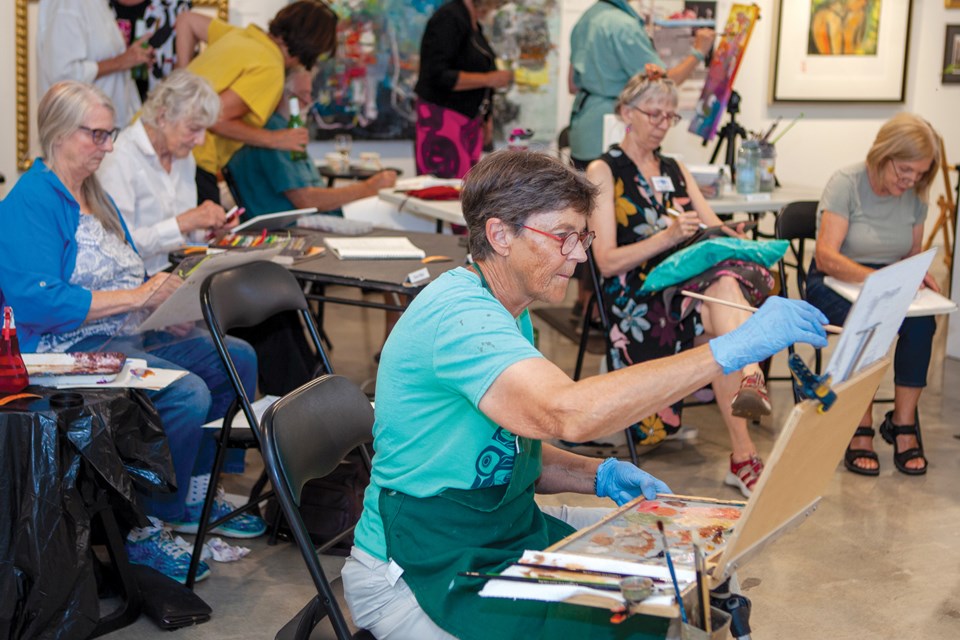With a flurry of artist demonstrations and the twang of ukuleles, the Gibsons Public Art Gallery last week observed a milestone anniversary while unveiling ambitious visions for its future.
The downtown gallery’s 20th anniversary was marked by 10 continuous days of public workshops. The sessions explored topics that ranged from Ukrainian egg painting to digital drawing. Performances by the Pulling Strings ukulele band and guitarist Jim Taylor provided musical accompaniment for an array of posters, art and signage that chronicled the institution’s history.
“Commitment to this gallery comes from the passion to be amongst beautiful people who are trying to keep the arts industry alive on the Sunshine Coast,” said Leslie Thomson, president of the non-profit organization. Thomson has served on its nine-member board of directors for five years. “Ever since COVID kicked in, it’s become that much more difficult to bring all the artists back into the union of teamwork. But I can proudly say that the gallery is in good hands for the future and the community.”
A reception held on July 5 commemorated the legacy of an influential figure in GPAG’s evolution. From the gallery’s inception in 2003, artworks had been displayed in a downstairs unit in the Quay Building. In 2012, a bequest from longtime gallery volunteer Eve Smart funded the purchase and renovation of the gallery’s street-level building on Marine Drive. Conversion of the former Bank of Montreal office included installation of a kitchen facility inside the original concrete-walled safe.
“Eve was embraced by the people who were involved in the gallery society and made to feel welcome and encouraged,” recalled Russell Crum, a lawyer who acted for the building’s original owners. “There was a vision [for expansion] and the ability to execute that plan. Those were the conversations I had with Eve. She became very comfortable with the notion that her estate would make a difference and it would be beneficial to this community.”
Smart was herself a musician and painter, and a selection of her canvases were exhibited during the anniversary period. Teacups and saucers used at the commemorative reception were selected from her collection of crockery.
As part of the anniversary celebration, the gallery released a building assessment that prescribed over $110,000 in repairs for the 60-year-old structure. Energy-efficient windows carry a price tag of $25,000. Repairs to the building’s stucco facade could tally $15,000. An under-utilized (and unheated) second storey is slated for overhaul.
The society, which operates independently of government and receives less than 10 per cent of annual revenues through public funding, is planning to tackle upgrade projects as part of a multi-year strategy.
“The building has a future,” said Thomson, “and the plan is very realistic. It’s going to take a few years, but at the same time, we’re not going to lose the integrity of our small-town community.”
Storage space is at a premium, with a growing number of Sunshine Coast residents donating artworks to the gallery through their estates. Meanwhile, the organization is expanding its curatorial focus to feature a blend of local and international artists. Thomson observed that submissions from South Africa, Germany, India and Australia have been shown alongside works by prominent Canadians.
During a live art contest on July 6, nine widely-recognized painters and digital artists from the Sunshine Coast assembled to create works over a two-hour span. Spectators gathered to see images taking shape in real time.
“GPAG may not have as much influence in the world as something like the Guggenheim [Museum in New York City],” said Thomson, “but with the ongoing changes that people will see, it should be considered the Guggenheim of Gibsons.”





